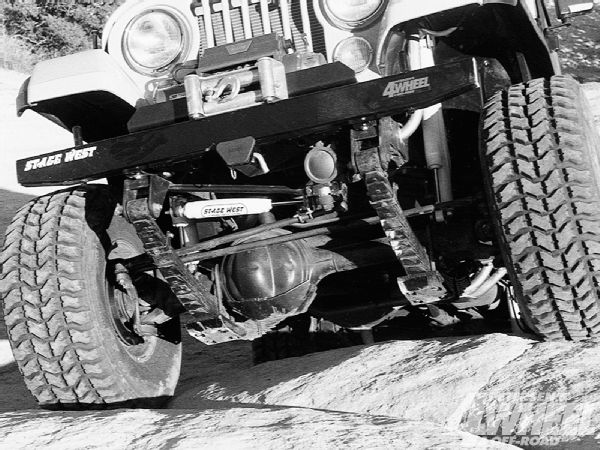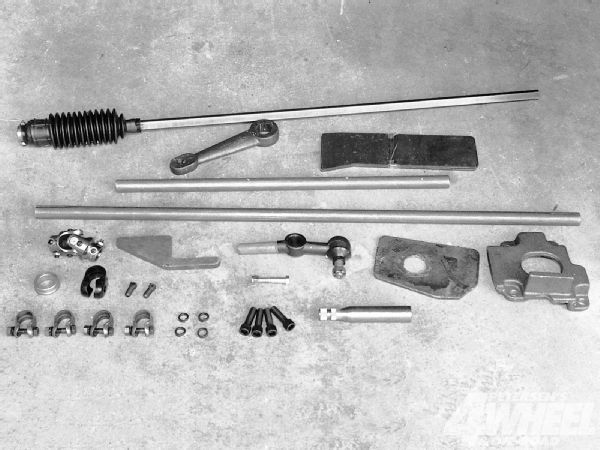
As cool as old Jeeps are to build, there are several mechanical systems that just cannot be overlooked. Well, you can try, but sooner or later the weak parts will end up on the ground and you'll be stuck trying to limp home. One of the worst items on pre-'70 Jeeps is the steering system. The original system mounts the steering box behind the front axle and connects to the front wheels through four relay rods and two idler arms. Even if you're not building an extreme Jeep, all of these connections make for plenty of slop in the steering, and if you're going nuts with larger tires and a lift, then you have to ditch this system.

Advance Adapters offers a conversion kit for '46-'69 Jeep vehicles that gives you all the pieces you'll need to adapt either a manual or power Saginaw steering box. The kit includes a new tie rod and one tie-rod end, a drag link, a steering-box mounting plate, frame enclosures to box the framerails, a lower steering-column bearing, an intermediate shaft, a spud shaft to connect the box to the new intermediate shaft, a Flaming River universal joint, a very helpful conversion booklet, and the necessary nuts, bolts, and clamps. The swap requires cutting and welding, so it more or less falls under fabrication work. The Advance kit gives you all the pieces you need except for the steering box, the pump, the pitman arm, and the steering hoses.
Because you are revising the steering system, you must take extreme care to follow all of the instructions and ensure that everything is performed correctly. Close enough doesn't cut it on steering.
 A steering conversion isn't a bolt-on, even though the Advance Adapters kit makes it much easier on '46-'69 Jeeps. You will need a MIG welder and an electric grinder in addition to basic handtools.
PhotosView Slideshow
A steering conversion isn't a bolt-on, even though the Advance Adapters kit makes it much easier on '46-'69 Jeeps. You will need a MIG welder and an electric grinder in addition to basic handtools.
PhotosView Slideshow











